- Thread starter
- #461
The eruption, Svartsengi, and Grindavik today, uploaded about three hours ago. There still seems to be strong degassing but the wind is brisk and air quality is good all over, per the graph.
Follow along with the video below to see how to install our site as a web app on your home screen.
Note: This feature may not be available in some browsers.
"We basically had a large explosion in Iceland, which combined with exactly the right configuration of wind to bring the plume from the Reykjanes Peninsula to Scotland and to Edinburgh specifically.
“It is a very unique event”.
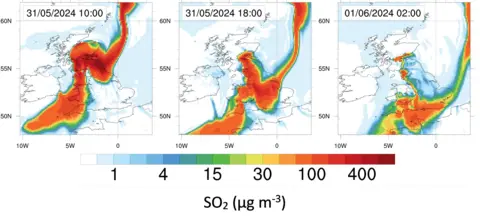
-- Source

Resort to lava cooling for the first time since the Heimaeyjar eruption
Lava is likely to pour over a dike not far from Svartsengi. The fire department expects to contain the spread by spraying it with water. There seems to be no danger to travel and the lava is moving slowly.
Grétar Þór Sigurðsson and Alma Ómarsdóttir
June 18, 2024 at 18:00 GMT,updated at 19:19
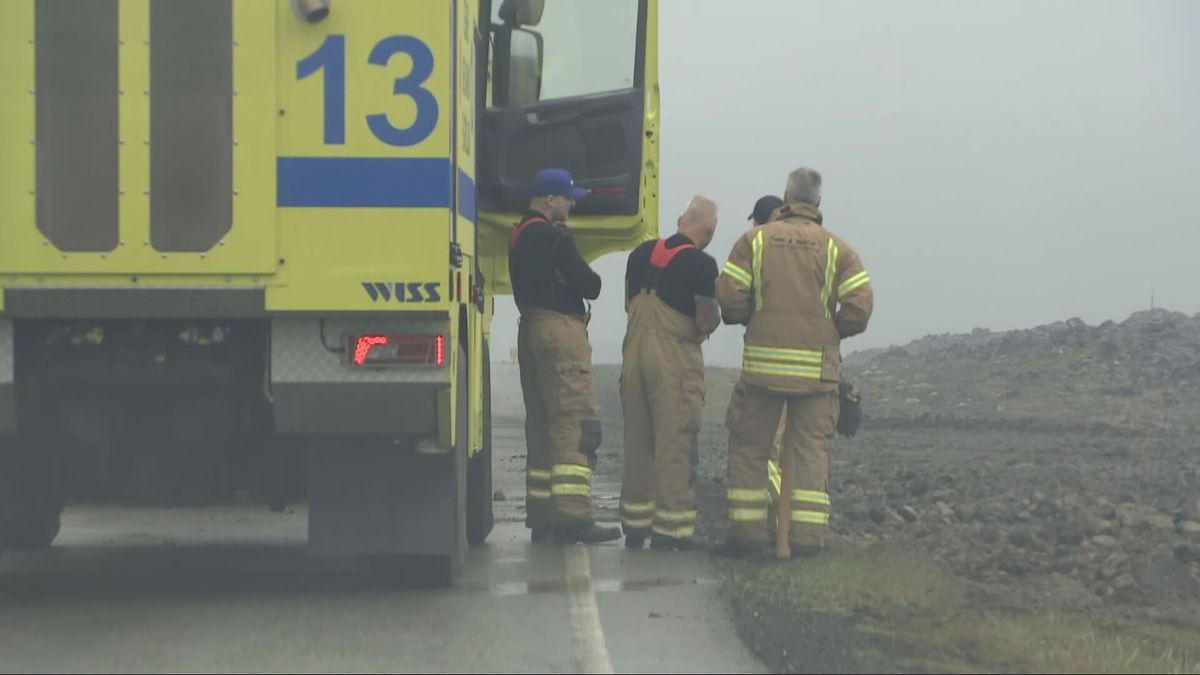
Firefighters prepare to spray on the lava.
RÚV – Guðmundur Bergkvist
Lava is about to pour over the defense wall at Sýlingarfell.
Attempts are being made to contain the lava with work machines. The fire brigade expects to spray on the lava and apply cooling for the first time since the Vestmannaeyja eruption...
Lava cooling has begun
Lava cooling has been started in order to prevent lava from flowing over the dike at Sýlingarfell. This is the first time since the Vestmannaeyjaja eruption that the method has been used.
Rebekka Líf Ingadóttir
June 18, 2024 at 22:10 GMT
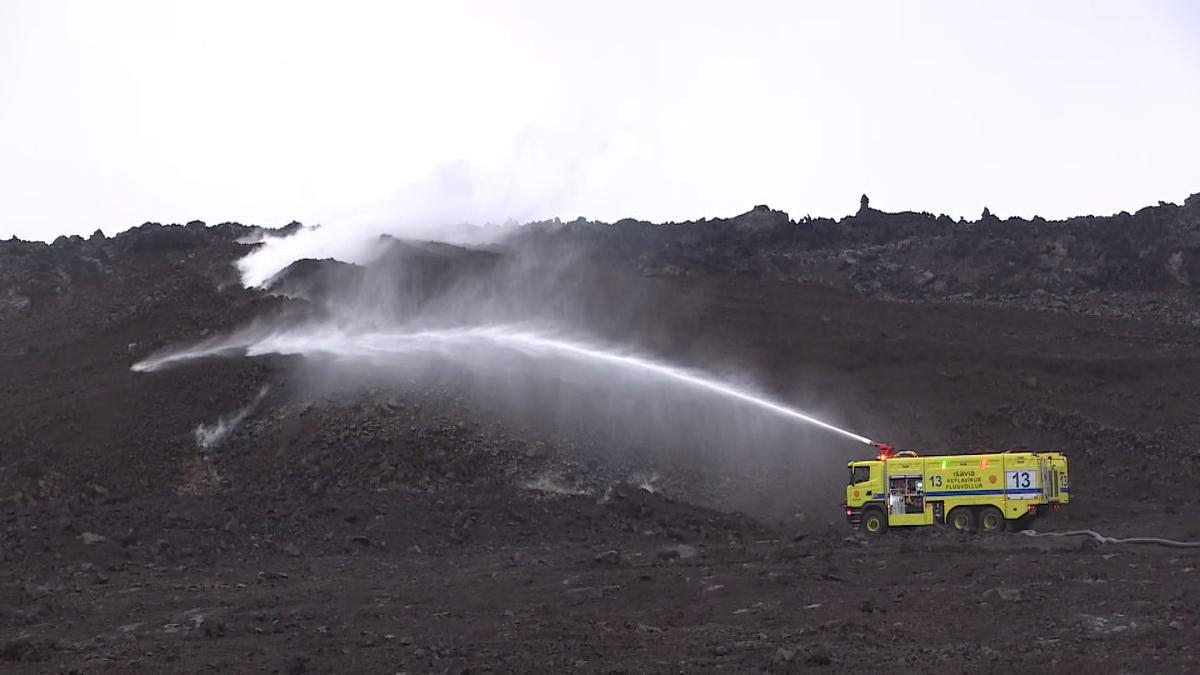
– RÚV - Guðmundur Bergkvist
Lava cooling has been started in order to prevent lava from flowing over the dike at Sýlingarfell.
When lava started pouring over the garden, a number of work machines arrived at the site to contain the lava, but in the afternoon it was decided to apply cooling,...
...
"The situation is that we are here with several bulldozers and earthmoving machines pushing soil up into the garden where lava began to seep over. We are strengthening it and then we are going to inject water into it as well and cool the lava that is a combination there in this weakness," says Einar Sveinn Jónsson, fire brigade chief in Grindavík.
About twenty responders are in the area, including from civil protection, Suðurnes fire protection and the fire brigade in the capital area....

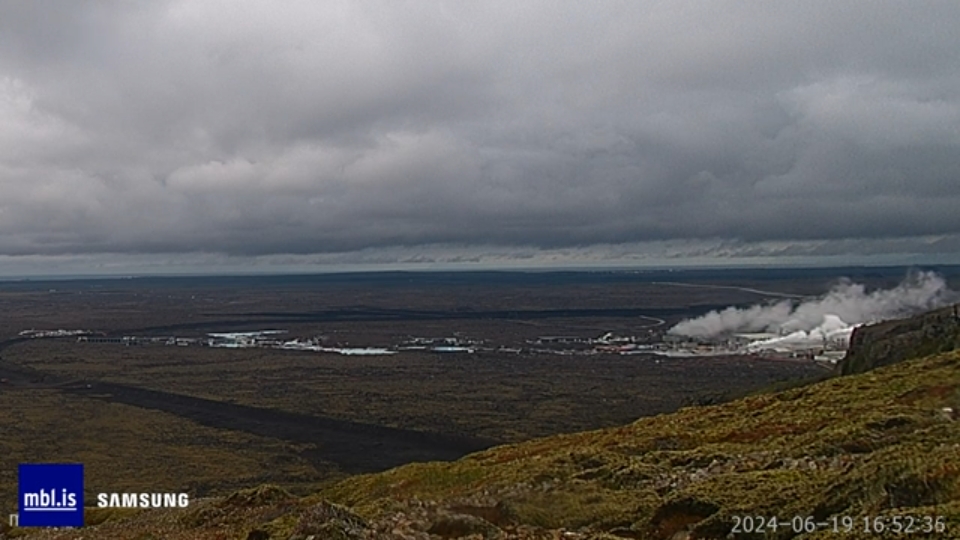
According to Einar Svein Jónsson, fire chief in Grindavík, there are about thirty-five people working at the scene. The water cooling is used in combination with the work machines, which according to Einar, are much more powerful than the water. "It's all good together like this," says Einar. When lava is cooled with water, a lot of water is needed. On the other hand, it works well on small leashes like the ones the fire department now has.

Declining activity in the crater
Hrauntungur flows over a dike north of Sýlingarfell
21.6.2024
Updated June 21 at 14:55
In pictures taken this morning during a drone flight by the Civil Defense, it can be seen that the activity in the crater is decreasing. Lava flow from the crater is not visible on the surface, but may be in closed channels from it. However, there is still flow in the lava tubes that crossed the dike north of Sýlingarfell yesterday. A picture from the Public Safety's web camera at Sýlingarfell shows the three lava tubes flowing over the park and machines working to contain the lava flow. The most active is in the lava tongue furthest to the west, which has moved forward by several meters and thickened in the last few hours. Gosórói is also decreasing and this is clearly visible on the seismometer of the Norwegian Meteorological Agency in Grindavík, as the attached graph shows.
Declining activity in the crater and a decrease in volcanic activity suggest that this eruption may end in the near future, but there is uncertainty as to exactly when. GPS measurements still show land in the Svartsengis area. It is an indication that pressure in the magma accumulation zone under Svartsengi continues to build, although the speed of the land giant is lower than before.
Photo of the crater taken around 9:30 this morning during the Civil Defense drone flight over the eruption centers. Photo: Almanvarni
Hrauntungun, which flow over a dike north of Sýlingarfell and work to contain the lava flow. Photo: Civil Defence
Noise measurements on the VÍ seismometer in Grindavík from the beginning of the eruption on May 29 to June 21. They show that the volcanic unrest has decreased in the last few days.

...Fréttastofa spoke to Hörn Hrafnsdóttir, an engineer at Verkís, during lunch, where water was being sprayed for cooling on one of the three lava tubes, a total of about 9,500 liters per minute.
She said that everything was going brilliantly, at least according to the state of affairs yesterday.
"There was a bit of stress going on then."
Work crews pushed up a dike inside the old gardens to slow the progress of the lava. At the top of the picture, lava is being cooled with water.RÚV / Ragnar Visage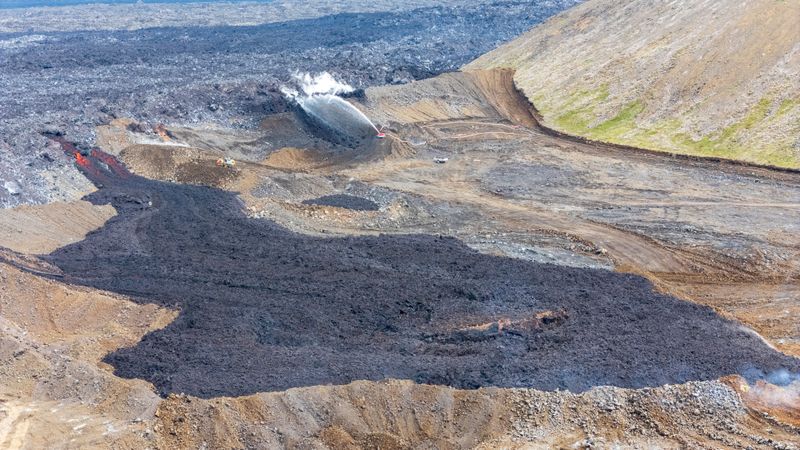
The second two reins have now been closed and it is time to move the injection device to the next tongue and try to cool it there.
"However, it is much more difficult to cool there because there we have a flow from under the lava. So it will be more of an experiment to see how it goes."
...A temporary defense collar was erected inside the defensive wall in Svartsengi last night to further inhibit the lava flow. Engineer Verkís says that now every effort is being made to raise the original defense wall.
Now we are back to focusing on raising the park itself that the lava is going over. It has been running for some time, but we are always getting delays because of these small lava flows that are crossing the park," said Hrönn Hrafnsdóttir from Verkís.
